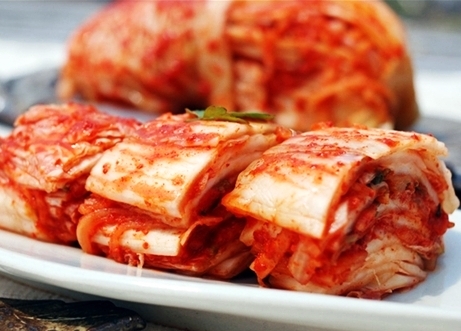
How to Ripen Kimchi
Everyone has a different preference as to when Kimchi(김치) tastes the best – some love eating freshly made, raw kimchi (kind of tastes like a salad); some love eating it when it is just perfectly ripe and then there are those who love sour kimchi (신김치 shin kimchi) which has basically over fermented and obviously tastes quite sour. But one thing is for sure – no one likes the stage when it is in the in-between stages of being raw and ripe. Kimchi really does not taste good at all when it is in the process of getting ripe – I had an aunt who used to call this the time when kimchi has gone CRAZY! And you certainly don’t want to eat the kimchi when it’s crazy! 🙂 So here’s how to ripen Kimchi and avoid CRAZY kimchi.
Since most of us now buy kimchi from the store, let me first write about the best way to eat a store bought kimchi. Too often, I hear people say that the kimchi served at our house tastes great, but when they try the same brand themselves, they think it doesn’t taste nearly as good. I realized it was because they don’t take the time to ripen it properly and then also forget to serve it cold (right out of the fridge). I found that most kimchi (even the poorly made ones) will taste quite palatable when they have had time to ripen properly.
Now, the hard part about buying kimchi from a store is that it is hard to tell at what stage of the fermentation process they are in. One clue is the appearance of the vegetables. They will look more shriveled up if they are further along in the fermentation process. And the chances are that it will also have lost a bit of the juice because the content will start to bubble and balloon up when it ferments which ends up usually overflowing out of the jar. This is actually too bad because kimchi should always be immersed in its own juices for it to taste the best.
The best way is to buy the freshest kimchi possible and bring it home and ripen it from the beginning. But this is usually not possible…So far, I have found the best tasting kimchi that you can buy are actually the ones that are directly imported from Korea (종가집Jongajip is my favorite). It is expensive but worth it in my opinion as long as it hasn’t traveled too far or stayed on the shelf too long at your store. Other than that, the next best thing is to try to buy kimchi that is made locally if it’s available (less chance of it over ripening) and when you bring it home, open it, smell it or better yet, taste it. If your store has a fast turnaround, it is probably in the “crazy” stage.
If it’s already fully ripe, put it in the fridge in the coldest possible setting. If it’s not yet fully ripened and you can wait, let it ripen in your fridge. This will take about 2 weeks in your fridge. Also note that the juice may overflow so either move the kimchi into a bigger container or take some out (1/5th) and leave some room for the kimchi to expand. If your kimchi is still very fresh, not at all ripe and you need to eat it quickly, you can ferment it at room temperature.
In the summer, Kimchi will ripen in 12 ~ 18 hrs and in cooler weather it can take about 24 – 48 hrs. Just check every 4-6 hrs.
If this is all too much info for you to digest, I have a chart at the bottom of this post that can help you with the process. (Boy, it’s been ages since I drew up a flowchart…brings back memories from my college days of hand drawing the charts using graphic rulers..)
What is the ultimate best way to ripen or ferment kimchi?
The most delicious and fantastic kimchi is made when it is fermented the old fashioned way…In a traditional Korean clay jar, buried in the ground in winter time. Even though the ground freezes in the winter, the jar and the saltiness of the kimchi keep it from freezing completely. This is called 김장김치 (kimjang kimchi). Kimjang kimchi is usually made around the ‘start of winter’ (입동 ipdong) in the lunar calendar which is just about now (Nov 7-8th in Gregorian calendar).
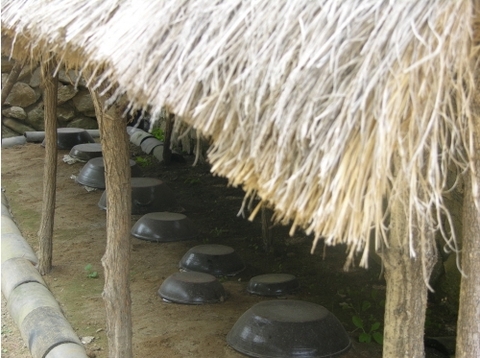
I remember when I was a kid, we spent days preparing and making kimjang kimchi so that it could last us through the winter and into spring. We first dug big holes in the ground big enough to hold our huge clay jars (so big that a child can fall in). In the meantime, we spent the day washing and brining 100+ napa cabbages and also preparing the ingredients for the stuffing. The next day we took these salted napa cabbages and inserted the stuffing in between each cabbage leaf. It was an enormous amount of work but boy…was it worth it. All winter long, we got to eat these amazingly crunchy and zingy and sometimes even ever so slightly frozen kimchi that came out of these jars in the ground. So why was it so tasty?
According to research, when it is buried in the ground, the temperature remains quite constant – at 32 – 35 F all winter long. At this temperature it takes about 20 days for the kimchi to fully ripen but it is definitely worth the wait.
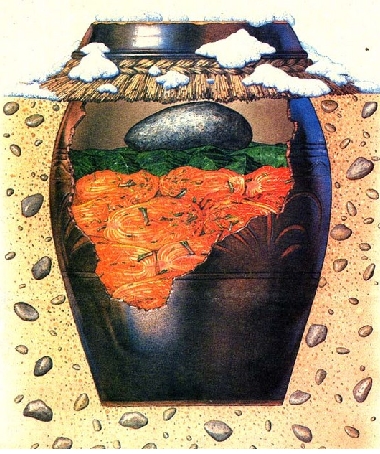
The clay jars are glazed to hold the moisture in but it can still breathe which allows just the right amount of air circulation to take away any heat produced from the fermentation (keeping the temperature stable). It also keeps the air tight enough for the bacteria to not grow too fast which helps the kimchi maintain its peak flavor for a longer period. The history of kimchi can be dated back almost 2000 years to the Goguryo Dynasty according to some historians, so you can see how long Koreans had time to refine the technique of kimchi making.
Since most Koreans now live in apartments and have no backyards to bury the jars, they have invented what is called a kimchi refrigerator. This fridge is different from the conventional refrigerator because the interior walls of the fridge are cooled instead of the air which helps to keep the interior at a more constant temperature. I own one and I have to say it is the next best thing to having your own kimchi jar in the ground. It even has temperature options for fermenting and then just storing it to prolong its freshness.
How to tell if Kimchi is ripe and ready to eat?
When a kimchi is not fully ripe, you are able to smell and kind of taste the individual ingredients – garlic, cabbage, radish, green onion, fish sauce, etc – as they have yet to fully integrate with each other. When it is fully ripened, the tastes of all the ingredients are well blended together and there is full flavor embedded in each cabbage leaf or vegetable pieces. There is also a slight sour taste with an added zing at the end. You can also no longer smell the raw ingredients individually but rather have a combined, wonderful slightly stinky smell that is unique to kimchi. Below is the chart that I promised earlier –
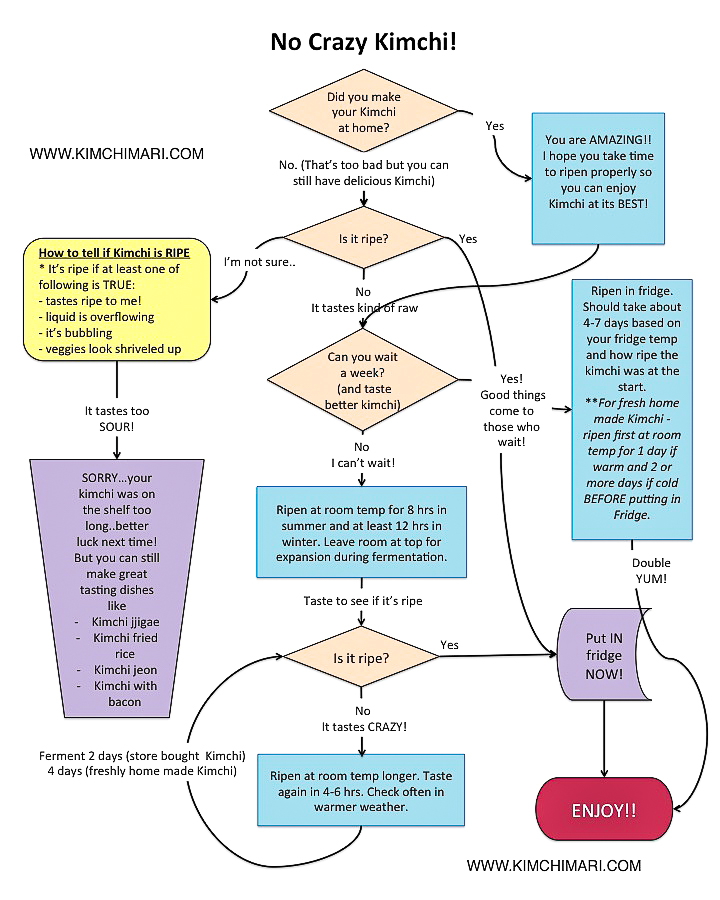
So how long can I store Kimchi in the fridge?
When stored at the ideal temperature that’s close to the freezing point of 32 F (-1 to 0℃), kimchi will keep for 3 months or more.
If the temperature of your fridge is higher (which is normally the case), it will probably keep for at least a month or more. Kimchi will start to taste just too sour when it starts to go bad – at which point, the best way to eat them is by cooking them by making Kimchi Jjigae, Budae Jjigae, Kimchi soft tofu stew, Kimchi fried rice and of course Kimchi Mari! Kimchi will sometimes go bad – it will have this whitish kind of film when it has been really too long and will also smell very pungently sour. You don’t want to eat it at this stage.
Can I take my Kimchi out from the refrigerator and leave it on the counter again to ripen further?
YES! Whether you have store-bought kimchi or made your own kimchi, you can take Kimchi out of the refrigerator at any time and let it ripen or sour further.
If it’s not ripe enough, it will take a long time to ripen in the fridge.
The whole point about my flow chart above was for people who have store-bought Kimchi. You may think it’s ready to eat because you got it from the store, but many times they are not fully ripe and therefore doesn’t taste as good.
Well, I hope this was helpful. Please share this info so that more people can learn how to ripen Kimchi properly and enjoy it at its best!
Take care,
XOXO
JinJoo
PS – if you want to learn more about Kimjang, here are two posts that teach you all about it!
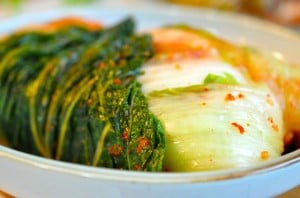 kimjang kimchi
kimjang kimchi- Kimjang Day: Part 1- How it’s done – I share my experiences and tips learned while doing Kimjang with my mother-in-law.
- Kimjang Day: Part 2 – Ingredients and Tips

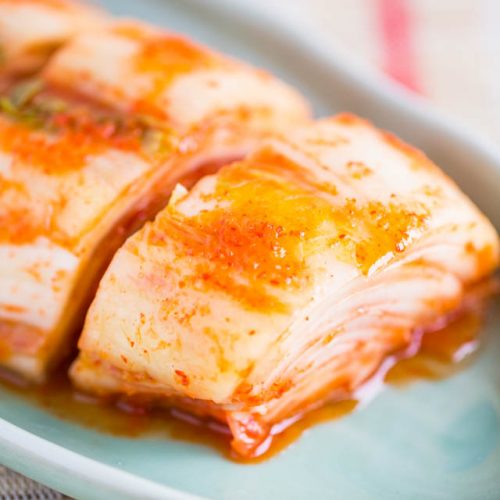
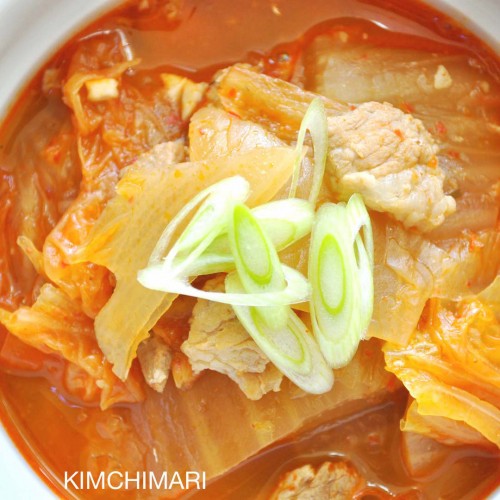
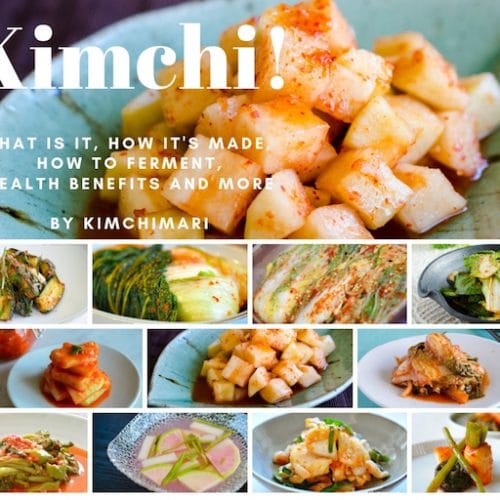

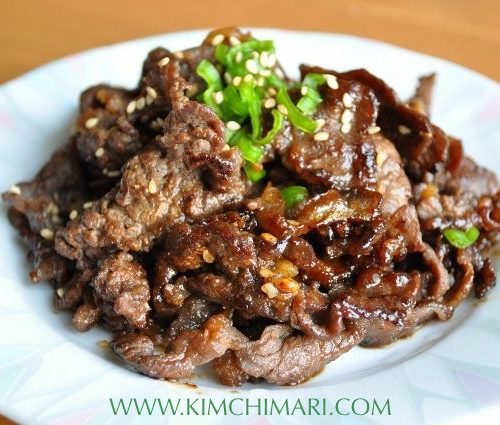
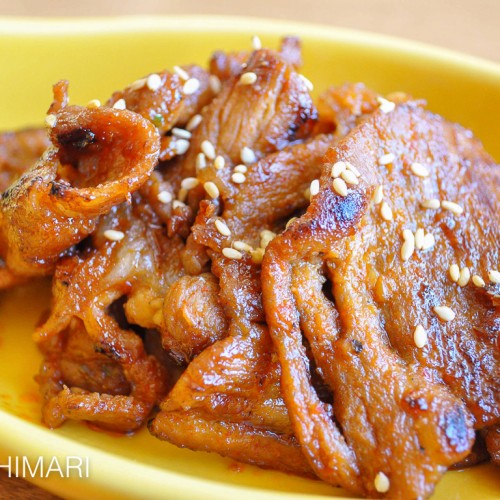


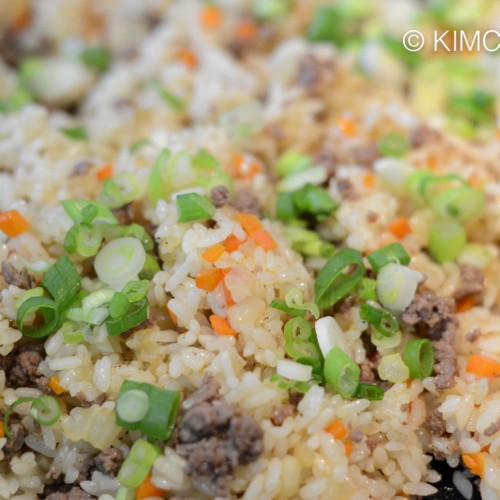
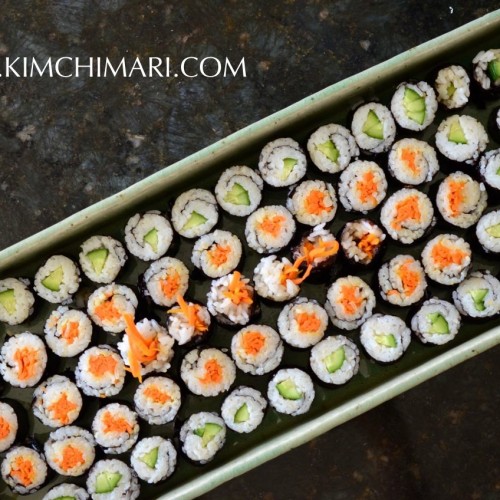









Jin-Joo:
My wife’s “nephew” is staying with us while I get him his divorce (I’m an attorney in my other life). He told me that he’s 1 1/2 Korean having come to the States as a boy and that he recalls the kim chi his granfmother made in Korea and stored in the Big Jars buried in the ground. Jeesu says the difference in taste between Kim Chi stored in the ground and that stored in containers placed in refrigerators to ferment is huge. Since we’re moving to Texas as soon as we sell our home here in the North we’ll be looking into a couple of jars for real “down home” tastes. Got to compare the jar to the refrigerator taste. If you ever arei nterested in “Anchovy Spaghetti” you know where to write. However, you need Pecorino Romano Cheese grated over it to truly enjoy the tastes.
Yes, the taste difference is quite huge. Unfortunately that taste is almost lost in Seoul because most people live in apartments. How is the winter in Texas? The winter should be quite cold (Korean winter days 32 to 50 F and nights 10-32 F) for it to work properly. Let me know how it works out!!
Jin-Joo:
I must tell you that there will ONLY be Korean food in the Kim Chi Refrigerator. Our current refrigerator cannot preclude tainting EVERYTHING with the smell of anchovies, corvina, etc. I haven’t told my beloved “little korean” that her Kim Chi Refrigerator willl be located somewhere were the rich aromas wont infiltrate the Western Food and Vice-Versa. I’ve found recipes for Jjambong and Jajamung(?) and I am addicted to Jjambong with large shrimp, squid, mussels and even “baby” octapus. Fortunately my “little korean” “Kung Ju” as I call her likes what my Italian godmother called “Anchovy Spaghetti” and I’ve got her hooked on that
.
My wife of 11 years is Korean and I’m Italian and German. I cook the Western Food and She cooks the Korean Food. My kung-ju just made a new batch of Cabbage Kimchi and all my friends who have become addicted to Korean Food are begging for “samples”. I’ve been privileged to be given other recipes of Kim Chi from my wife’s lady friends and just as Italian “Sugu” every family has their own variation. Theirs have always been delicious. Your flow cart has helped me understand the process and I think my wife’s next big present won’t be jewelry but her very own Kim Chi Refrigerator. I’m not that altruistic, I just want to keep my Western foods, salami, prosciutto, pecorino romano cheese tasting Italian and not like Kim Chi.
I really don’t enjoy my fridge smelling like kimchi either so I totally understand.. BTW, salami is my most favorite food..:) I’m sure your wife will really like having a separate kimchi fridge. It also keeps other vegetables and fruits very fresh so you can use it that way too. Thanks for stopping by!
Philip, I am both you and your wife, sort of – I’m Austrian-Italian first generation, but now I cook only Korean food. 🙂 I was lucky enough to find a used KimChi refrigerator and I love it. It will be the best gift ever. The Koreans I know here keep theirs in the garage. Mine’s in my kitchen. I want your jjambong recipe!
Visit WWW. KoreanBapsang.Com fot jjamppong recipe. Buon Appetito!
Wow this is a very interesting post about kimchi, now I can learn more about the science and secret behind kimchi 🙂
I wish I can bury a clay jar in my back yard, but in Canada my crazy neighbourhood would call a police for something weird like that lol 🙂
Thank you! Haha…calling the police.. that reminds me. I had a friend in CA who made her own Soybean paste in her backyard in big garbage cans and her neighbor did file a complaint to the city because it was smelling so bad!!! Unlike Kimchi, the soybean paste has to stay open during the summer days and boy it can def. stink!!
w0w…!!! this chart was really helpful..thank y0uu♥♥♥♥♥